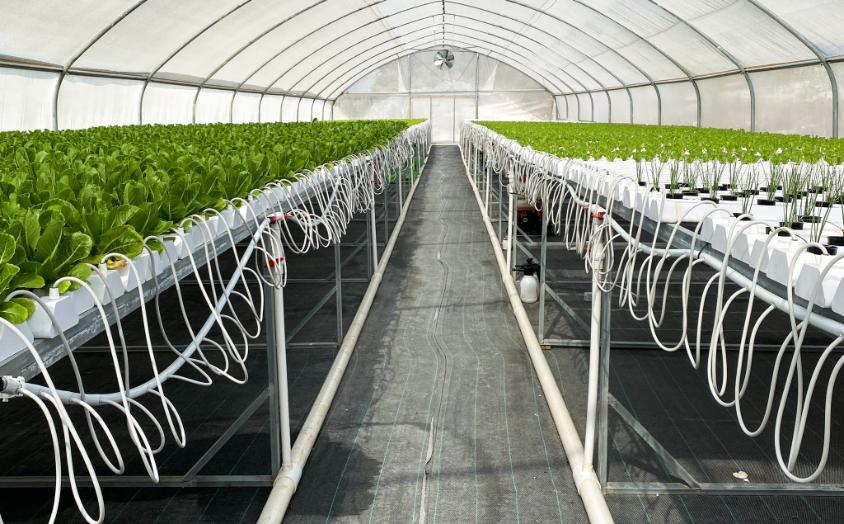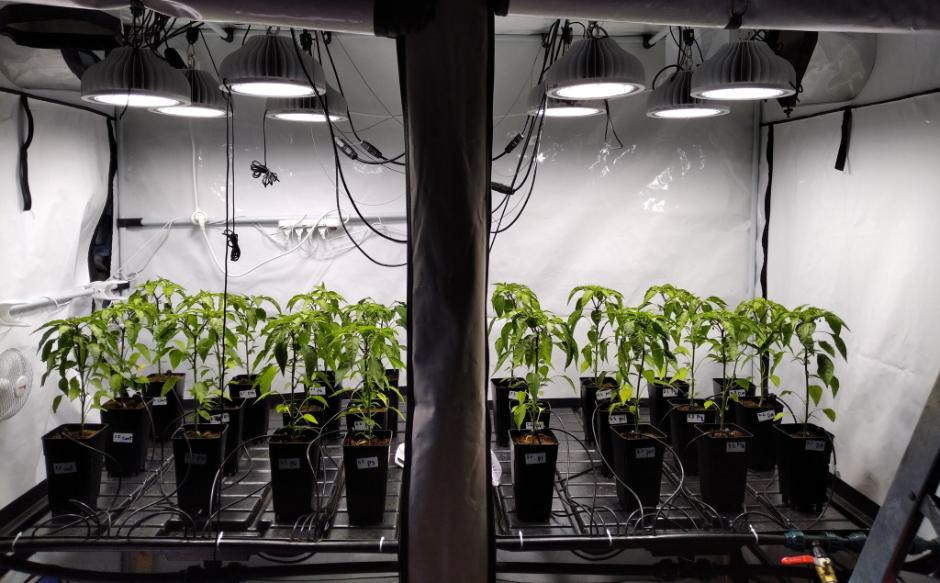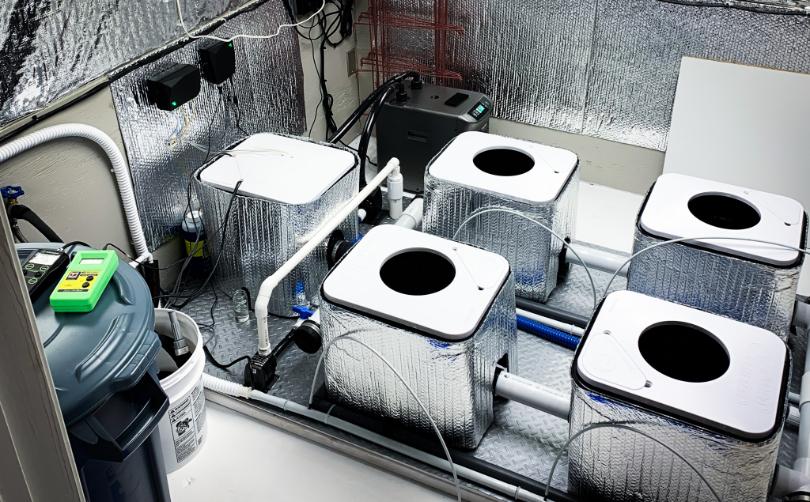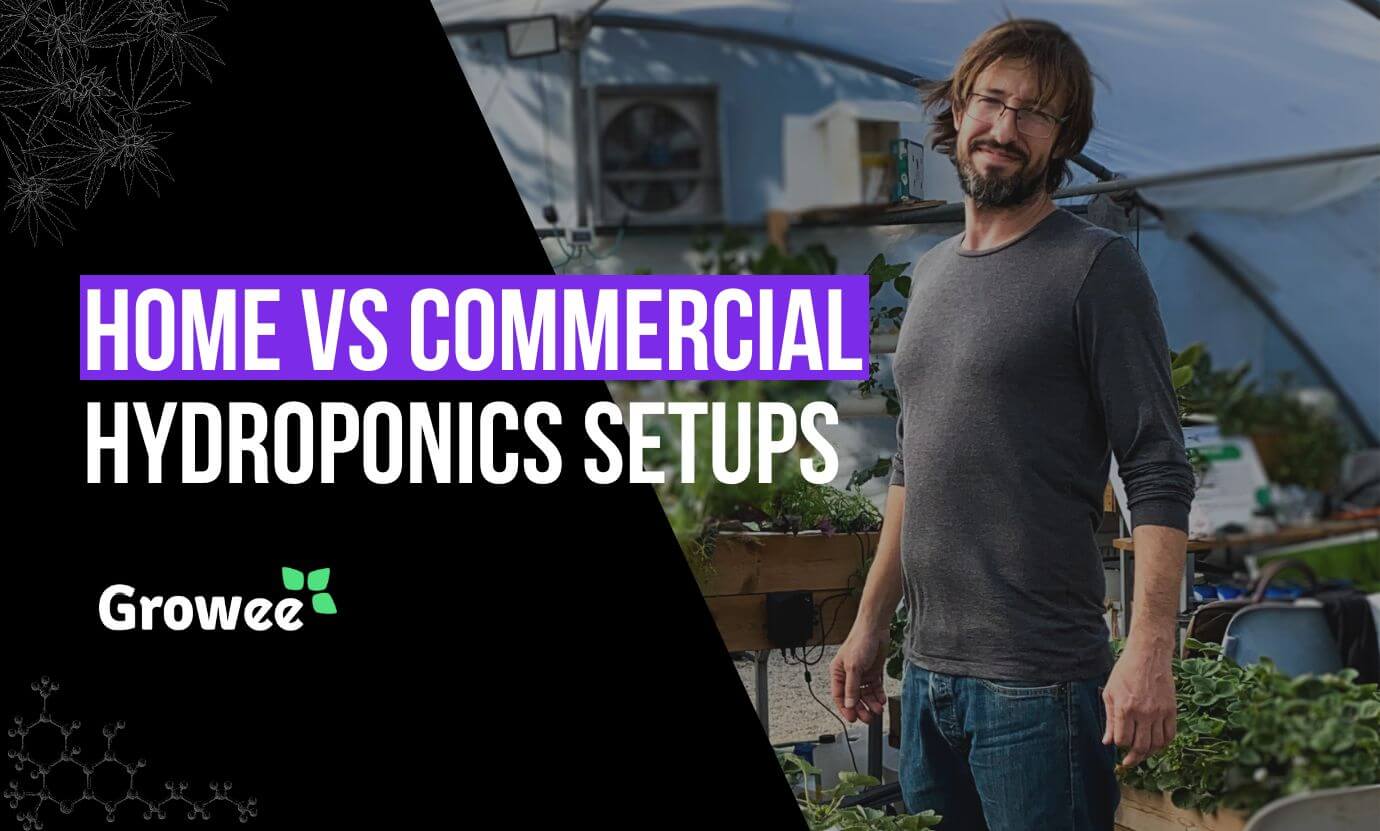Hydroponic farming is an innovative way of growing plants that doesn’t require the use of soil. Instead, nutrients are dissolved in a solvent, usually water, which is then supplied to the roots of the plants through a variety of means.
This is in part what we are here to talk about today, the different types of hydroponic farms and what they are best used for. Sure, hydroponic farming is great as far as controlling pH levels, water, nutrients, and more is concerned, but there are some subtle differences between them that you need to know about.
We’ll also cover what makes home-grow different from a small-scale commercial operation. We’ll even talk about how to make your life easier when growing hydroponically, particularly with some awesome products from Growee that can help automate the process.
See How Growee Can Save You Time By Automating Your Plants Feeding
Water pH – Automated pH Up and Down Control
Nutrients Mixing – Automated Nutrient Dosing with Target EC / PPM Control.
Control From Anywhere – WiFi Connection and mobile App
Two Main Types of Outdoor Hydroponic Farms
What many people may not know is that hydroponic farming can be done both indoors and outdoors. When it comes to indoor hydroponic farming, there are two main types that people usually choose, NFT and the floating raft method.
NFT
NFT, also known as nutrient film technique, involves plants being grown in channels or gullies. These are small trenches through which a nutrient solution flows, covering the roots of the plants, and thus supplying the plants with nutrients and hydration.
The lower part of the plant roots are submerged, while the upper parts are able to absorb oxygen. Generally, the nutrient solution is recirculated.
This is a great method of hydroponics as it is very efficient with water and nutrient use, it allows for good root oxygenation, it barely requires any medium, and adjusting the solution is fairly easy to do as well, albeit easier if you have the best hydroponics system such as those from Growee.

Floating Raft
The floating raft method is very simple yet effective. Here, plants are grown on floating rafts, usually made of some kind of polystyrene or a similar buoyant and water-resistant material. The plants grow on top of these rafts, with the roots hanging down into a nutrient-rich solution. The water chamber usually has diffusers or air stones to help oxygenate the water.
Many people like the floating raft method as it is exceedingly simple to set up, and it’s quite efficient and cost-effective as well. Due to its nature, it’s also much better suited for larger crops than NFT. The downside is that it can be challenging to keep the water properly aerated.
Two Main Types of Indoor Hydroponic Farms
When growing indoors, there are two main types of hydroponic systems that are commonly used, so let’s take a look.
Grow Bench with Rockwool
A grow bench generally consists of a table or bench into which holes are drilled, into which an inert and fibrous substrate, such as rockwool or coco choir is placed. The plants are supported by this inert medium, with water and nutrients usually being provided through a drip irrigation method, by manual watering, or through an ebb and flow system.
This is a good system as it allows for a high degree of control, plus rockwool is great for maintaining adequate levels of both aeration and hydration. However, you do have to be careful, because this method makes it easy for plants to absorb too much water, leading to waterlogging and root rot issues.

RDWC
RDWC stands for recirculating deep water culture, and this is a much more advanced form of a deep water culture system. Here, multiple deep water circulation units are hooked together, which allows the nutrient solution to be recirculated throughout the whole system, which helps to improve overall consistency.
The advantage here is that with RDWC, compared to regular DWC, the distribution of oxygen and nutrients is much more even, and it’s great for large scale operations too. However, it is also very costly and complex to set up.

The Difference Between Home-Grow and Small-Scale Commercial Hydroponics Farms
There are some pretty big differences between home-grow hydroponics operations and small-scale commercial farms that are worth talking about.
- Size: Home hydroponics setups tend to be much smaller and usually only made for personal use. They focus on growing just a few crops for personal consumption. On the other hand, small-scale commercial farms are built for one reason, to turn a profit, and this means that they are generally larger.
- Financial Needs: With a small home-grow operation, you can get away with spending less than $1,000 to start up a decent setup, but this certainly is not the case for even a small commercial operation. It can cost thousands of dollars for the space, nutrient delivery systems, climate control systems, and other hardware.
- Complexity: Home hydroponic systems, especially if you choose the right kind, are usually not that complex or formal. If you’re just growing a few plants at home, there is no need for it, unlike with a commercial operation, which has to keep records, follow management practices, and even rules as set out by the government.
- Automation: Although things are changing, historically, it was only the commercial operations that used automation to help make growing hydroponics easier. However, with the advent of companies like Growee that create affordable automation options for hydroponics home-growers, home-growers now have easier access to more affordable automated nutrient delivery systems.
Benefits of Hydroponic Farming vs Soil
You might be wondering why you would ever grow your plants hydroponically instead of with soil. Well, there are actually a few big reasons why you might want to try the hydroponics method.
Use of Space
Hydroponic farming can in some cases be done vertically, which means that you can save a lot of space when compared to growing in soil.
Efficiency
Hydroponic systems are touted for their efficiency, both with water and nutrients. You just end up using less water and fewer nutrients in the long run, combined with less waste, and that means savings for your wallet.
Speed and Yield
What also stands out about hydroponics systems is that they allow plants to grow faster than in soil, not to mention that hydroponic farming usually produces much higher yields than soil-based farming.
Eco-Friendliness
Because hydroponic farming doesn’t require large swaths of land or soil to be tilled, not to mention that it is water efficient, it’s also more eco-friendly than traditional farming methods.
How to Manage Feeding Plants in a Hydroponics Farm
You might think that feeding plants in a hydroponic farm is difficult, but not with the tips that we are about to provide you with.
Manual vs Growee Nutrient and pH Management
Managing the nutrients and pH level are the biggest challenges you’ll face here, and if you’re doing this manually, it means spending countless hours measuring and re-measuring your EC and pH levels, day after day. However, the Growee automated monitoring nutrient system mixes your nutrients and substances automatically to achieve the ideal pH and EC levels without you having to do hard work.
Water Replacement
Water replacement for a reservoir can be difficult because every time you add water, you need to test it for pH and EC, something that takes up too much time. However, with a simple automated machine that mixes the nutrients for you, this is no longer a problem. Just add the water into the reservoir and the nutrients into the containers, and the system will do the rest.
Managing Multiple Grow Rooms in an Indoor Farm
Managing multiple hydroponic operations can be a challenge, especially if you have to manage individual nutrient solutions. However, this really is not a problem with the Growee Pro Combo, which can distribute your nutrient solution from a single reservoir to multiple systems.
Why Use Growee Products in Your Hydroponic Farm?
There are many reasons why Growee products are ideal for use with hydroponic systems.
- Instead of mixing manually, Growee products mix your nutrients for you perfectly every time.
- Growee products automatically dose pH chemicals so you don’t have to.
- Instead of taking manual measurements of pH and EC, the Growee system does it all for you.
- The Growee App records all important info, so you don’t have to do it by hand anymore.
Final Thoughts
The bottom line is that growing plants hydroponically has many advantages. Really the only disadvantage is the complexity associated with mixing the nutrients. However, this is a problem that the Growee Pro Combo solves with ease.
FAQ
What Are the Biggest Challenges in Hydroponic Farming?
The biggest challenges include the high setup costs and the need for continuous monitoring of equipment.
What Types of Plants Can Be Grown in Hydroponic Systems?
Virtually any and all types of plants can be grown hydroponically, including fruits, vegetables, herbs, and flowers.
Is Hydroponic Farming Environmentally Friendly?
Hydroponic farming is usually considered more eco-friendly than traditional soil farming.
How Does a Hydroponic Farm Work?
A soilless medium is used to support the plants, while a water and nutrient solution feeds them.
What Are the Disadvantages of Hydroponic Farming?
The high cost and complexity of operation are the two biggest disadvantages to hydroponic farming.



